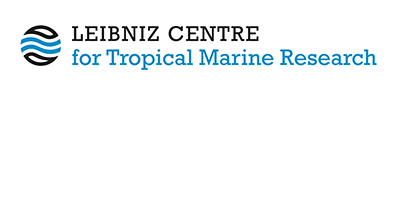A novel menthol-DCMU bleaching method for foraminifera: generating aposymbiotic hosts for symbiosis research.
Schmidt, Christiane  ORCID: https://orcid.org/0000-0001-8461-3485, Puerto Rueda, Diana N., Nusser, Moritz, Oakley, Clinton A., Pochon, Xavier, Stuhr, Marleen
ORCID: https://orcid.org/0000-0001-8461-3485, Puerto Rueda, Diana N., Nusser, Moritz, Oakley, Clinton A., Pochon, Xavier, Stuhr, Marleen  ORCID: https://orcid.org/0000-0001-9155-9464, Raposo, Débora S. and Davy, Simon K.
(2025)
A novel menthol-DCMU bleaching method for foraminifera: generating aposymbiotic hosts for symbiosis research.
Symbiosis
.
DOI https://doi.org/10.1007/s13199-025-01046-1.
ORCID: https://orcid.org/0000-0001-9155-9464, Raposo, Débora S. and Davy, Simon K.
(2025)
A novel menthol-DCMU bleaching method for foraminifera: generating aposymbiotic hosts for symbiosis research.
Symbiosis
.
DOI https://doi.org/10.1007/s13199-025-01046-1.
|
Text
Stuhr.pdf - Published Version Available under License Creative Commons: Attribution 4.0. Download (7MB) |
Abstract
Understanding the cellular symbiosis between marine holobionts and their endosymbiotic algae is crucial for predicting the resilience of coral reefs to climate change. While bleaching protocols have been widely applied to model organisms such as corals and sea anemones, their application to other symbiotic taxa remains underexplored. This study presents the first application of a menthol-DCMU bleaching method on larger benthic foraminifera (LBF), important calcium carbonate producers in reef ecosystems. Two species, Amphistegina lobifera (harbouring endosymbiotic diatoms) and Sorites orbiculus (harbouring Symbiodiniaceae dinoflagellates), were tested for their suitability for controlled symbiont removal. The study aimed to establish a non-lethal and effective bleaching protocol to generate aposymbiotic hosts for experimental symbiosis research. In a two-step approach, we first determined an optimal menthol concentration (0.19 mmol l⁻¹) and then assessed its effect on growth, motility (as a fitness indicator), and mortality over four weeks. The treatment successfully induced an aposymbiotic state in 100% of A. lobifera specimens with minimal effects on motility and mortality. Growth was inhibited in both species, preventing calcite deposition during the bleaching process. This study establishes menthol-DCMU bleaching as a viable method for producing aposymbiotic foraminifera, allowing controlled studies of symbiont uptake, symbiosis establishment, and host-symbiont specificity in this important taxon.
| Document Type: | Article |
|---|---|
| Programme Area: | PA2 |
| Research affiliation: | Ecology > Mangrove Ecology Biogeochemistry and Geology > Geoecology & Carbonate Sedimentology |
| Refereed: | Yes |
| Open Access Journal?: | No |
| DOI: | https://doi.org/10.1007/s13199-025-01046-1 |
| ISSN: | 0334-5114 |
| Date Deposited: | 15 Apr 2025 12:11 |
| Last Modified: | 08 May 2025 12:50 |
| URI: | https://cris.leibniz-zmt.de/id/eprint/5645 |
Actions (login required)
 |
View Item |





 Tools
Tools Tools
Tools